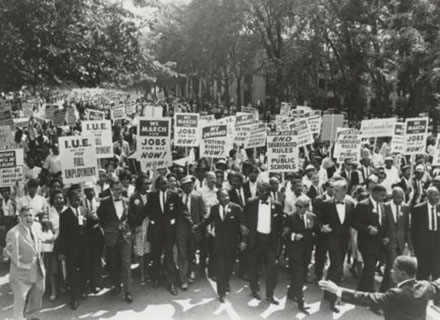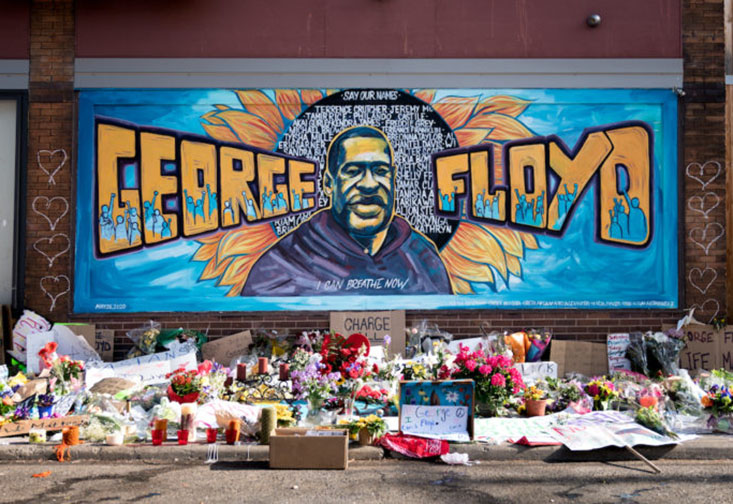For the past month, demonstrators around the world have protested police brutality following the killings of black Americans such as George Floyd, Breonna Taylor and Tony McDade. Chants of “Black lives matter” and “No justice, no peace” have filled the streets around Tampa Bay. Fed up with what they see as a criminal justice system rife with racial injustice, many current protesters are calling for police reform, and others for more drastic measures.
There’s overwhelming support for these demonstrations. Roughly two-thirds of Americans support the Black Lives Matter movement, according to the Pew Research Center, which is more than supported the civil rights demonstrators in Selma, Alabama in 1965.
It’s no surprise then, said historian Ray Arsenault, that parallels have been drawn between Black Lives Matter and the civil rights movement of the mid-20th century.
“There’s a difference between a protest and movement,” explained Arsenault, a professor of history and civil rights expert at the USF St. Petersburg campus. “Not all protests become organized movements, but the fact that the recent Black Lives Matter protests have persisted for several weeks as well-organized nonviolent marches and demonstrations suggests they have gone well beyond the protest stage.”
Today’s Black Lives Matter activists have adopted many of the same nonviolent direct action techniques and tactics developed during the struggle for civil rights in the 1950s and 1960s. The sit-ins and freedom rides of the earlier struggle have morphed into the current “die ins” where protestors lie in the street and block traffic. In both eras the protestors have relied on nonviolent civil disruption to draw attention to their cause and to mobilize mass support and political leverage.
There are other notable similarities between the two movements, according to Julie Buckner Armstrong, professor of English at the USF St. Petersburg campus and editor of multiple books on the civil rights movement. “Both were spurred by acts of violence. Both have targeted goals – to dismantle Jim Crow laws in the mid-20th century and end racist police practices today. And both were primarily led by youth figures. Martin Luther King, Jr. was only 26 when he became a spokesperson for the Montgomery Bus Boycott.”

As the civil rights struggle of the 1950s and 1960s evolved, the movement gained national attention by organizing boycotts, sit-ins, freedom rides, mass marches, and voting rights campaigns. The demands for radical change became clear.
“They took the struggle out of the courtroom and into the streets, insisting on freedom now, not later. And that is exactly what the Black Lives Matter protestors are doing,” Arsenault observed. “In both cases, the protestors are willing to go into the streets, to go to jail, and in some cases to put their bodies on the line in an effort to shame the nation into responding to their call for liberty and justice for all.”
Today, the demands of the Black Lives Matter movement include defunding and dismantling police departments, which many view as systemically racist institutions with problematic histories of oppressing black Americans. In fact, a black man is more than three times more likely than a white man to be killed by police.
Arsenault supports the demilitarization and partial defunding of police departments through a transfer of funds and authority to social service agencies. But he questions whether a blanket demand for defunding is realistic or politically viable. He encourages protestors to focus their efforts on eliminating systemic bias, creating civilian review boards and addressing the “blue code,” which sees police officers keeping silent about the crimes and misconducts of their colleagues.
As awareness of racial injustices grows, there are plenty of things people can do to support racial justice, according to Armstrong. First, educate yourself. Research and read up on resources related to anti-racism and how to be an ally.
Then, integrate your life. “If you surround yourself with too many people who think just like you, you won’t be able to see the bigger picture,” she said. “Do you live in an all white neighborhood, go to an all white school or church, work at an all white job, or patronize only white-owned businesses? Change that, and listen to the people you meet.”
Finally she said, “call out racism when you see it. The jokes, the ignorant remarks, the stereotypes and so on. Call out your elected officials when they say racist things or support racist policies.”
